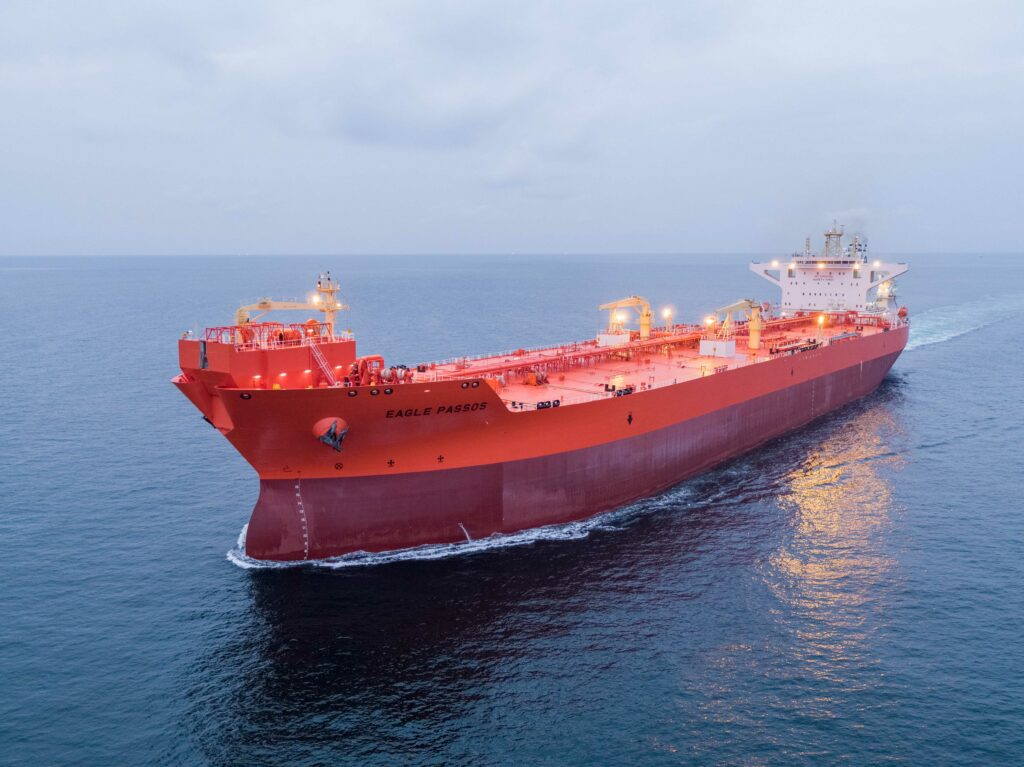
US classification society ABS and South Korean shipbuilder Daewoo Shipbuilding & Marine Engineering (DSME) have signed a joint development project (JDP) to use solid oxide fuel cell (SOFC) technology to replace at least one of three diesel generators typically onboard a very large crude carrier (VLCC).
It’s the second SOFC-focused JDP between ABS and DSME, with the first collaboration in 2019 revealing the high efficiency of a SOFC and gas turbine hybrid system due to the re-use of hot exhaust off-gas.
“SOFC systems have significant potential for applications in maritime transport and we are excited to be able to support this project, which will advance the industry’s understanding of their possibilities,” Darren Leskoski, Regional Vice President North Pacific of Business Development at ABS, said.
“This JDP will contribute to gain knowledge on safe use and accommodation of a fuel cell system with constraints of space on the ocean-going vessels, benefitting maritime sectors seeking green technology for electricity and propulsion,” Il Guk Woo, Vice President of Naval and Energy System Research and Development Institute at DSME, commented.
In this latest JDP, the duo will review the feasibility of a SOFC system being installed on a VLCC.
As explained, DSME will select the particular type of VLCC for the study, considering the analysis of load requirements, emission control zone, stack characterization and system footprint prediction as well as simulation of process flow and arrangement of the system on the vessel and risk analysis.
ABS will review the findings and evaluate safety issues arising from the arrangement of the system with respect to existing structures and equipment of the vessel in accordance with ABS Rules and Guides.
Ultimately, DSME intends to seek ABS approval for the design.
ABS Smart Notation for AET’s new shuttle tanker
Earlier this week, ABS also awarded AET, a petroleum arm of MISC, the SMART (INF) Notation for its 152,700 DWT dynamic positioning (DP2) shuttle tanker, Eagle Passos.

The ship was built by Korean shipbuilder Samsung Heavy Industries (SHI) and delivered to the company on 16 November. It is the final of four shuttle tankers purpose-built for charter to Petrobras.
Being the first shuttle tanker to be granted an ABS Smart Notation, which recognizes the vessel’s data communication and network infrastructure, Eagle Passos will also be granted the Operational Performance Management (OPM) and Crew Assistance and Augmentation (CAA) class record comments in recognition of the optimization, monitoring and reporting smart functions.
These are delivered through SHI’s SVESSEL platform, which is designed to expedite the transition from analog-based conventional ship systems into a digital-based lifecycle vessel management approach.
“We are delighted to support AET with the latest smart ship solution SVESSEL, which is developed to complete digitalization of the vessel. We expect to see a large number of SVESSEL to be applied in the marine and offshore industries in the near future and to contribute to the transition to digitalized smart ships,” Yong-Lae Shim, SHI Director of Ship and Offshore Research Institute, Vice President, said.
“The Smart Infrastructure notation recognizes that the hardware and software of the SVESSEL platform are designed and installed to support the rich data streams that can be leveraged to support enhanced maintenance, operational efficiency and safety capabilities. ABS is pleased to award this notation to a shuttle tanker as an industry first,” Patrick Ryan, ABS Senior Vice President, Global Engineering and Technology, noted.
The post ABS, DSME to use solid oxide fuel cells onboard VLCCs appeared first on Offshore Energy.
